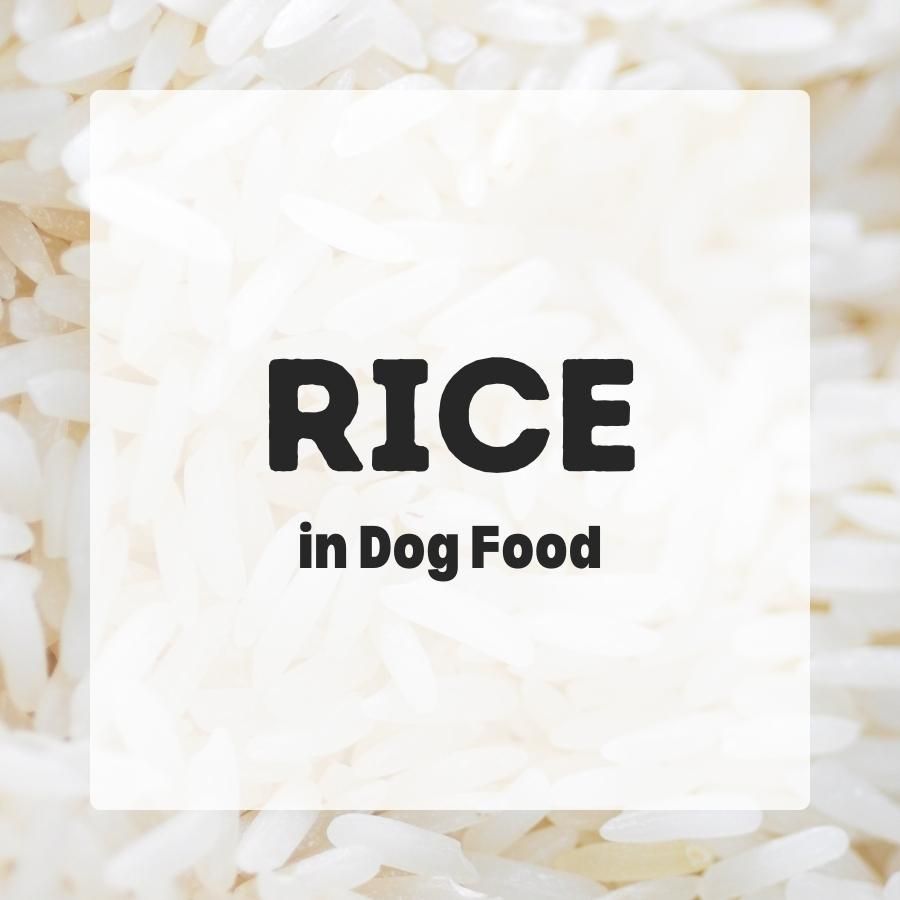Rice in dog food is a common grain ingredient. While white rice is a source of starch, brown rice is a more nutritious option.
Contents
About Rice
Rice is the seed of the grass species Oryza sativa.
Rice has been cultivated since ancient times, it was first domesticated in China. Today, this cereal grain is a staple food of over half the world’s population, mainly in Africa and Asia.
Paddy rice is harvested with the hull attached.
Before rice can be processed the hull gets removed first, turning paddy rice into whole-grain brown rice. By removing the rice bran and germ, brown rice turns into polished white rice.
Rice in dog food is mainly used as a source of carbohydrates. It also provides some protein, although less than other grains.
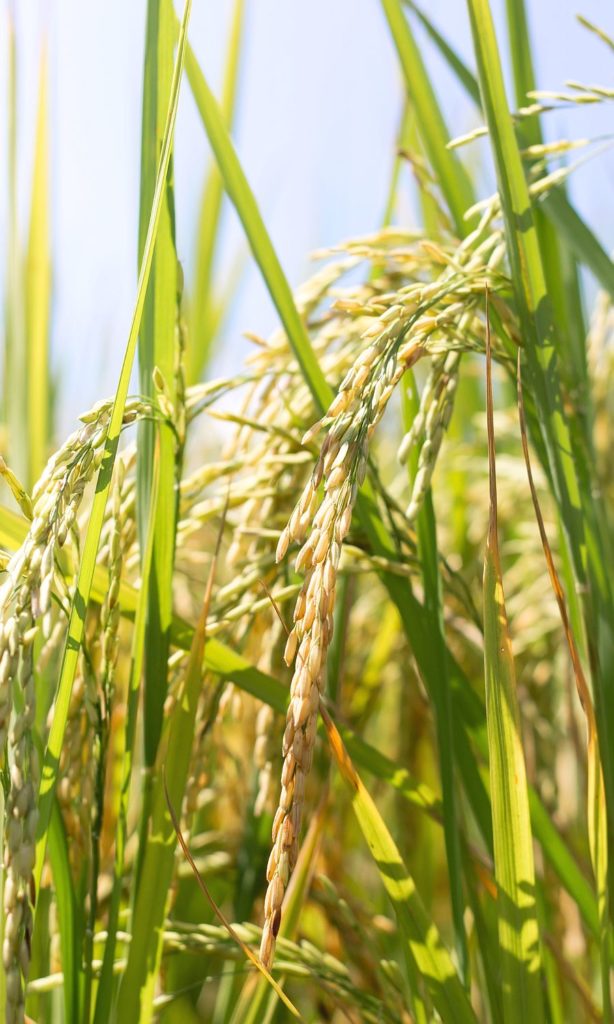
However, there are also some downsides to rice.
Arsenic occurs naturally in soil and groundwater, and rice can absorb a lot of arsenic from the flooded fields where it is grown[12].
Additionally, rice can be contaminated with mycotoxins, which are toxic substances produced by certain types of fungi[10].
Wild rice is not the same as rice, it is usually used for species of the genera Zizania and Porteresia, both wild and domesticated.
White Rice
Most of the annual harvest is processed into white rice[11].
Rice is one of the most commonly used cereal grains in pet foods, third only to corn and wheat. Manufacturers incorporate about 55.400 tons of rice in their products annually[2].
White rice is a very common ingredient in grain-inclusive dog food due to its low cost and availability. If a dog food recipe only lists “rice“, it is usually safe to assume the rice being used is white.
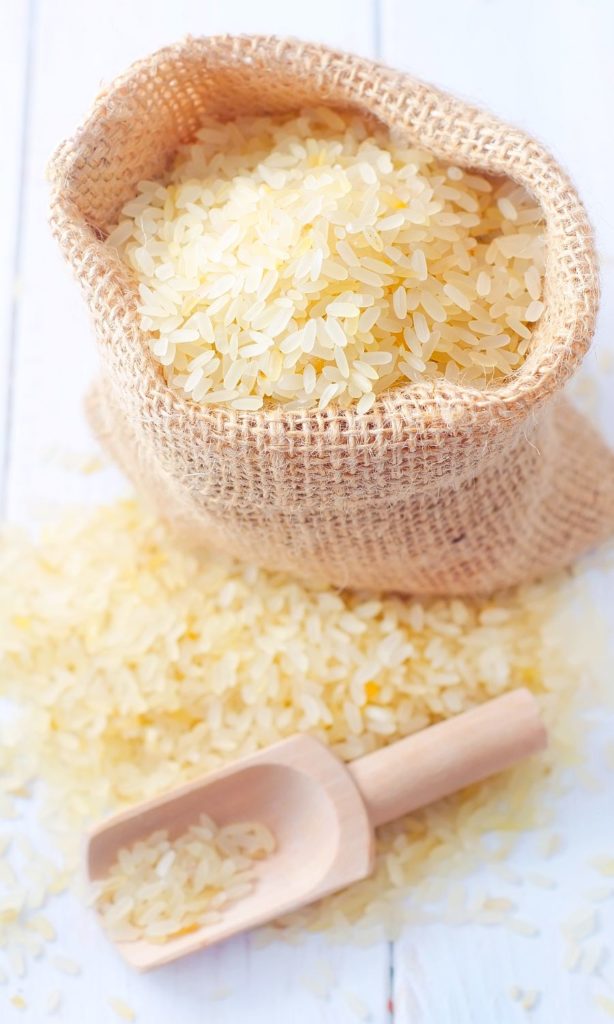
White rice is polished rice that had the hull, bran and germ removed, making it less nutritious than brown rice.
White rice has a high starch content, typically higher than 80% in dry matter, and it contains little fat or fiber. Rice is lower in fat and protein than other cereals[9,11].
It is mainly a palatable source of carbohydrates. Starch does not only provide lots of energy but is also vital to produce dry kibble.
White rice is often included in hypoallergenic formulas and provides lots of highly digestible starch.
White rice has a moderate to high glycemic index and causes higher peaks in glucose than legumes[4]. But to be fair, there is little information on how this metric might actually affect dogs[8].
With the same processing methods rice kernels are ground into smaller particles compared to other cereals[5].
A 2009 study found that rice is more effectively digested and fermented than other grains when used as a cereal in dog food[6].
White rice usually has lower amounts of arsenic than brown rice because the outer layers are removed to make white rice.
However, white rice lacks some important nutrients that are found in the outer bran, germ, and aleurone layers of brown rice.
Polished rice or rice flour made from finely ground white rice contains the highest amount of total starch when compared to other rice ingredients[3].
While it is less nutritious than brown rice, it is still a palatable source of mainly rice starch that can provide dogs with energy.
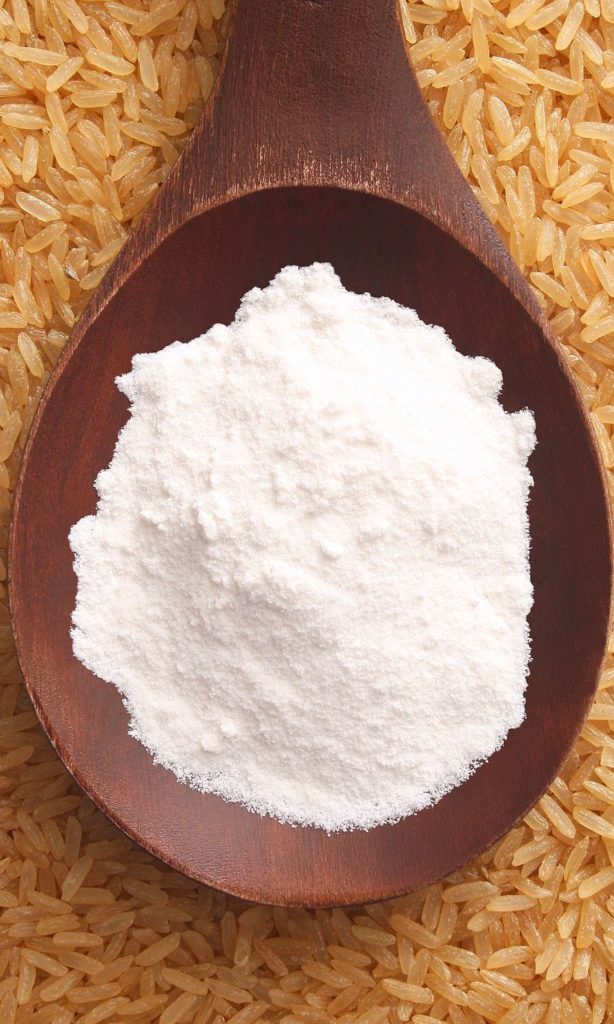
Brewer’s Rice
What is brewer’s rice in dog food?
Just a by-product of the rice milling process.
It consists of small, broken fragments of white rice that have been separated from the larger kernels during polishing[1].
Broken rice has about 25% or less of the original length of the grain.
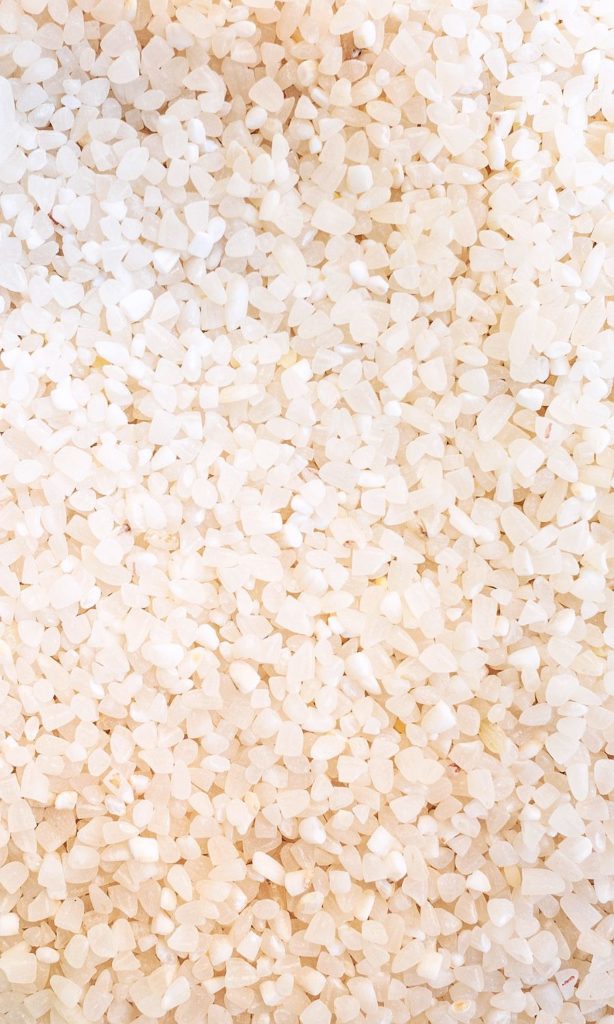
Brewer’s rice is a very common source of starch in dog food recipes[2]. It is just a more economic alternative to intact rice.
Brewer’s rice is also called chipped rice or broken rice, it is a highly digestible source of carbohydrates.
But just like intact white rice, it is missing many of the nutrients contained in whole-grain brown rice.
Brewer’s rice is often used for the production of rice flour, starch, and alcohol. Despite its name, it is not a brewery by-product but rather a raw material often used by breweries.
How does brewer’s rice compare to brown rice?
Well, brewer’s rice in dog food has basically the same nutritional value as intact white rice. So it is lower in other nutrients than starch when compared to whole-grain rice.
And although it is just pieces of white rice, it somehow is higher in rapidly digestible starch and lower in resistant starch, making it a slightly less valuable option than intact white rice[9].
But overall, brewer’s rice is a palatable and energy-rich source of carbohydrates that is very common in dog food.
Brewer’s rice (or any other processed starchy material) as one of the first ingredients in dog food just means the manufacturer likes to include high amounts of carbs in his kibble food.
But it is not an “empty filler”, does not cause more allergies, and is not bad for dogs like some dog owners like to claim.
However, it is lower in nutrients than other grains, making it a less valuable source of carbohydrates in a dog’s diet.
Brown Rice
Brown rice, also known as whole-grain rice, is a nutritious ingredient that is used by many brands of dog food.
It is the rice grain without the poorly digestible hulls but still containing the bran and germ, which makes it a whole grain.
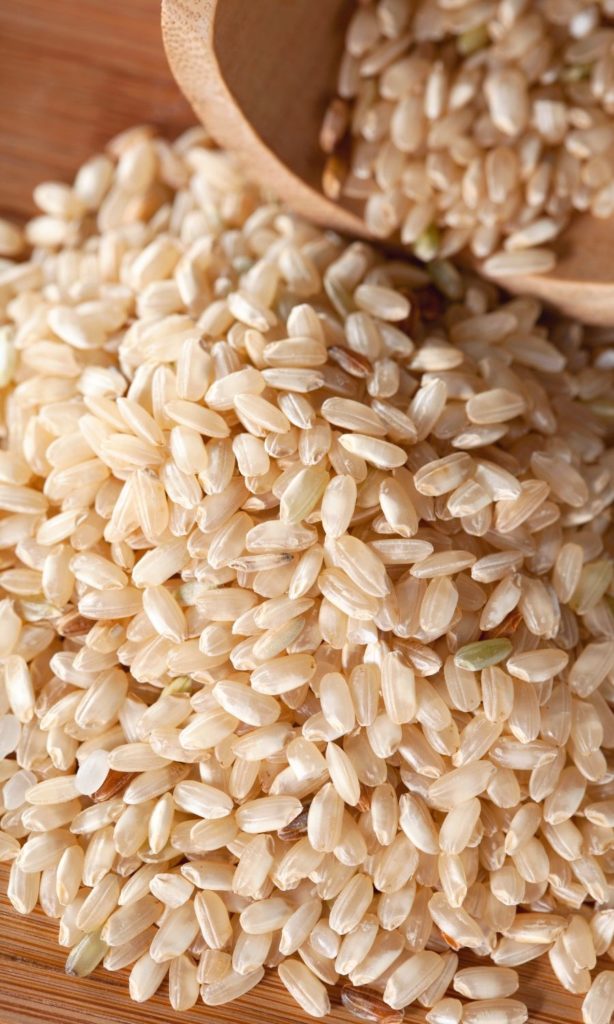
While polished rice is mainly high in starch, brown rice can also be quite nutritious, including B vitamins, iron, manganese, selenium, magnesium, and omega-3 fatty acids.
It is a healthier alternative to white rice and also a good source of dietary fiber. However, brown rice is lower in crude protein and lower in fiber compared to other whole grains[3,9].
Rice Bran
Rice bran in dog food is a by-product of the rice milling process composed of the pericarp or bran layer and germ.
And the rice germ, despite its small size, contains a large portion of the vitamins and fats of the rice grain.
Rice bran is also an excellent source of dietary fiber and can contain small amounts of hull or broken rice fragments.
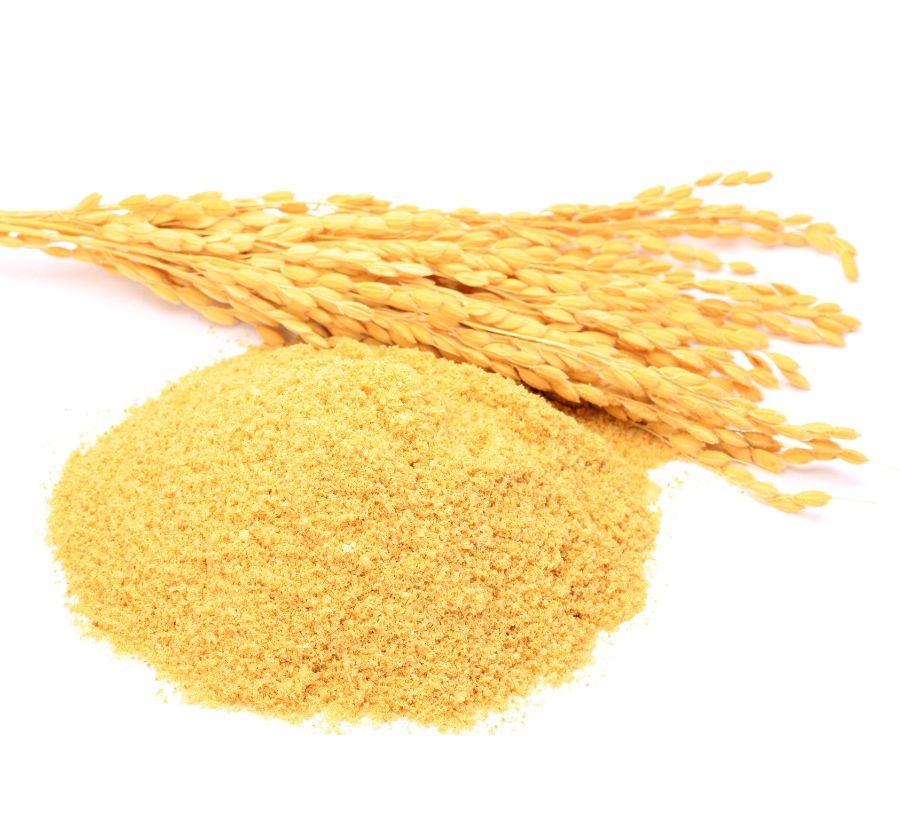
The AAFCO guidelines specify that rice bran should not contain more than 13% crude fiber[1]. Perhaps as a precaution, because it is sometimes adulterated with added rice hulls.
It also contains abundant nutrients such as vitamins B1, B3, and B6, iron, manganese, selenium, and magnesium, as well as natural antioxidants and some essential amino acids.
Rice bran contains 14-18% oil and can provide omega-3 fatty acids[11]. But a 2004 study found that fat sources such as chicken fat or beef tallow used in a particular dog food usually overshadow the contribution of rice bran[7].
In fact, the fat in rice bran can become rancid very quickly during storage due to the presence of a fat-dissolving enzyme that becomes active when the bran is separated from the rice.
To obtain a special ingredient, defatted rice bran, for dog food, part of the oil can be removed with chemical solvents[1].
Compared to other common rice ingredients, semi-defatted rice bran is richer in minerals such as calcium, phosphorus, potassium and magnesium[3].
But most of the rice bran in dog food has not been defatted.
The rancidity process can alternatively be delayed by heating or drying immediately after milling.
In summary, incorporating rice bran into dog food can provide an alternative fiber or mineral source for canine diets.
Rice Protein
A few manufacturers use rice protein concentrates in their recipes.
Rice protein in dog food does not contain gluten.
It can be a source of lysine or sulfur-containing amino acids such as methionine. However, rice protein in dog food does not provide a complete source of essential amino acids, but should be combined with other protein sources.
Further Reading
[1] AAFCO Official Publication. Chapter 6. Free Access.
[2] Pet Food Production and Ingredient Analysis (PDF). 2020. Institute for Feed Education and Research (IFEEDER), North American Renderers Association (NARA), Pet Food Institute (PFI)
[3] Beloshapka et al. Compositional Analysis of Whole Grains, Processed Grains, Grain Co-Products, and Other Carbohydrate Sources with Applicability to Pet Animal Nutrition. Foods. 2016. https://doi.org/10.3390/foods5020023
[4] Quilliam et al. The effects of varying amylose levels in different diets on digestibility and glycemic response in canines. Journal of Animal Science. 2020. https://doi.org/10.1093/jas/skaa278.557
[5] Bazolli et al. Effect of the particle size of maize, rice, and sorghum in extruded diets for dogs on starch gelatinization, digestibility, and the fecal concentration of fermentation products. Journal of Animal Science. 2015. https://doi.org/10.2527/jas.2014-8409
[6] Kore et al. Evaluation of alternative cereal sources in dog diets: Effect on nutrient utilization and hindgut fermentation characteristics. Journal of the Science of Food and Agriculture. 2009. https://doi.org/10.1002/JSFA.3698
[7] Spears et al. Evaluation of stabilized rice bran as an ingredient in dry extruded dog diets. Journal of Animal Science. 2004. https://doi.org/10.2527/2004.8241122x
[8] Rankovic et al. Glycemic response in nonracing sled dogs fed single starch ingredients and commercial extruded dog foods with different carbohydrate sources. J Anim Sci. 2020. https://doi.org/10.1093%2Fjas%2Fskaa241
[9] Bednar et al. Starch and Fiber Fractions in Selected Food and Feed Ingredients Affect Their Small Intestinal Digestibility and Fermentability and Their Large Bowel Fermentability In Vitro in a Canine Model. The Journal of Nutrition. 2001. https://doi.org/10.1093/jn/131.2.276
[10] Geicu et al. Composition-Based Risk Estimation of Mycotoxins in Dry Dog Foods. Foods. 2023. https://doi.org/10.3390/foods12010110
[11] Feedipedia.org – Animal Feed Resources Information System.
[12] Karagas et al. Rice Intake and Emerging Concerns on Arsenic in Rice: a Review of the Human Evidence and Methodologic Challenges. Curr Environ Health Rep. 2019. https://doi.org/10.1007%2Fs40572-019-00249-1
